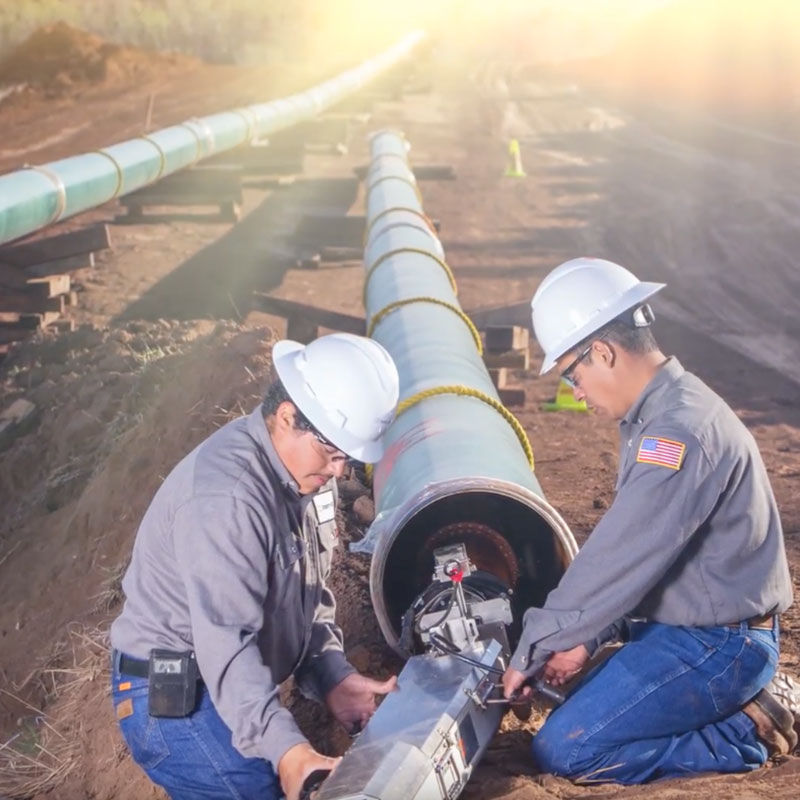Presented by:

This article appears in the E&P newsletter. Subscribe to the E&P newsletter here.
In all organizations, including oil and gas, legacy methods to achieve various business objectives must be replaced to avoid costly delays and declines in productivity and efficiency, from the C-suite to the oil rig. There is no denying the future is digital, and in the oil and gas industry, 75% of companies believe they already have the right level of skills to derive value from mobile and cloud investments. Moreover, more than 90% of those businesses say they are already using these technologies. Yet, the sector sees inefficiencies and a lack of process management that impacts energy service providers across the streams.
The problem is companies in this industry may seem like they are a part of the technology revolution by using Excel spreadsheets and email versus paper-based forms, but there's a fundamental misunderstanding of what digital transformation truly is. These companies are falling behind, and although they may be investing in technology at the drill site, resources also need to be allocated to influence change at the company level. Today's volatile market environment requires that digital transformation must touch every part of an operation, whether an oilfield service or a production operation.
Traditionally, oil and gas companies relied on siloed spreadsheets and handwritten forms to track jobs in the field and inventory of their equipment. You'd often see executives with three-inch binders of Excel field tickets to send out to sign for auditing purposes. However, keeping information siloed, whether a photo of oil and gas equipment or paper forms in a binder, can lead to a single point of failure, a lack of reporting and an inability to do long-range planning. Combining multiple systems, such as ticketing and maintenance, into one platform helps bring new efficiencies.
Three ways to improve efficiencies by embracing digital transformation:
1) Scheduling and dispatch: The most powerful link between a service team and its customers is the dispatcher. Digitizing the scheduling and dispatch process means managing a technician's skill level by leveraging data collected on field tickets to track on-the-job training hours and performance when scheduling crews and equipment onto jobs. Oil and gas companies should leverage strategic analytics to empower management to make operational and talent decisions on a shift-by-shift, job-by-job basis. Today's digital tools also let oil and gas companies track where assets are and study employees' qualifications to know who meets the necessary job requirements when scheduling and dispatching personnel.
2) Invoicing: Digital transformation can extend to invoicing in oil and gas and provide a 360-degree view of a customer's account balance. Digitizing the invoicing process lets oil and gas companies create invoices from tickets and items and generate reports based on the data. A streamlined workflow and access to real-time data can reduce billing errors, customer pushback and time to payment. In addition, invoicing solutions integrate with enterprise resource planning solutions to support the intricacies of customers' invoicing requirements.

3) Equipment and asset maintenance: Oil and gas companies can use Internet of Things and edge computing devices to gather asset data, monitor the condition of assets in the oil fields and remotely understand an asset's overall health. From proof of service to equipment history, digitizing maintenance allows for scheduled and compliant upkeep of assets. Using these tools, companies can increase asset uptime, boost economic output and decrease labor costs.
Hitting the gas on digital transformation
By embracing mobile and cloud tools, oil and gas companies can evolve and gain new efficiencies, increase productivity, improve customer service and reduce billing errors. Whether scheduling people and equipment to jobs, writing service tickets or managing asset maintenance, oil and gas companies can benefit from streamlined and efficient processes. But they must embrace hands-on digital transformation throughout an organization to be successful.
About the author: Travis Parigi is the founder and executive vice president of LiquidFrameworks, a ServiceMax company. Parigi focuses on growing the company's software platform and evangelizing its benefits to customers. He plays an active role in the technology, architecture and overall product vision. Prior to LiquidFrameworks, Parigi was a founding member and served as a senior engagement manager with Emerging Inc.
Recommended Reading
Wayangankar: Golden Era for US Natural Gas Storage – Version 2.0
2024-04-19 - While the current resurgence in gas storage is reminiscent of the 2000s —an era that saw ~400 Bcf of storage capacity additions — the market drivers providing the tailwinds today are drastically different from that cycle.
Biden Administration Criticized for Limits to Arctic Oil, Gas Drilling
2024-04-19 - The Bureau of Land Management is limiting new oil and gas leasing in the Arctic and also shut down a road proposal for industrial mining purposes.
PHX Minerals’ Borrowing Base Reaffirmed
2024-04-19 - PHX Minerals said the company’s credit facility was extended through Sept. 1, 2028.
SLB’s ChampionX Acquisition Key to Production Recovery Market
2024-04-19 - During a quarterly earnings call, SLB CEO Olivier Le Peuch highlighted the production recovery market as a key part of the company’s growth strategy.
Exclusive: The Politics, Realities and Benefits of Natural Gas
2024-04-19 - Replacing just 5% of coal-fired power plants with U.S. LNG — even at average methane and greenhouse-gas emissions intensity — could reduce energy sector emissions by 30% globally, says Chris Treanor, PAGE Coalition executive director.





